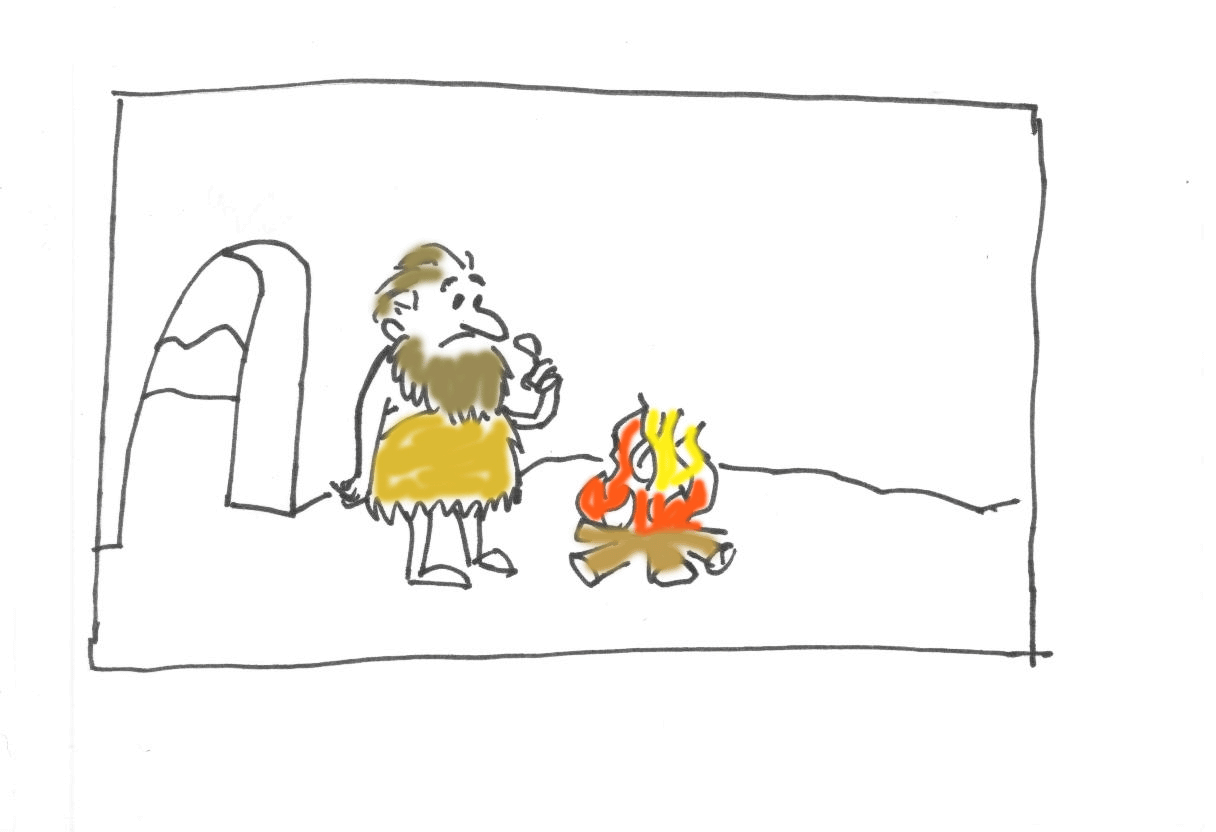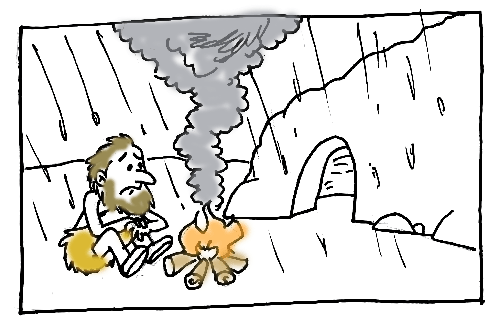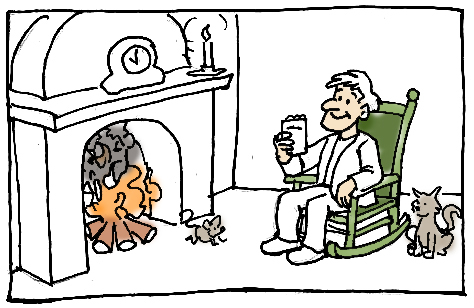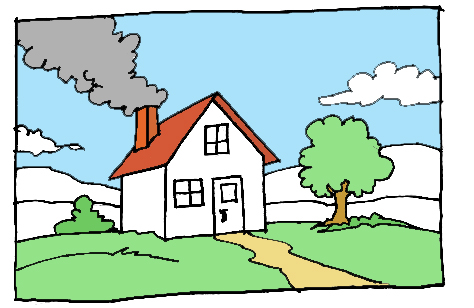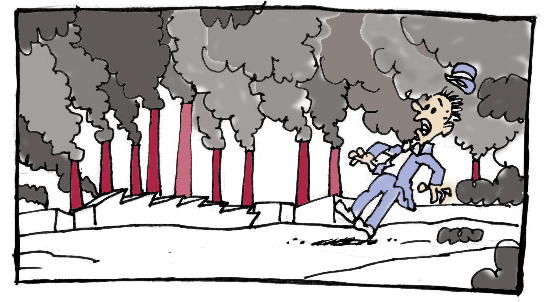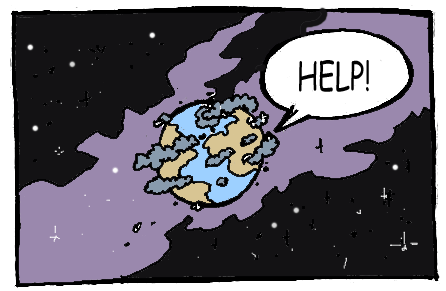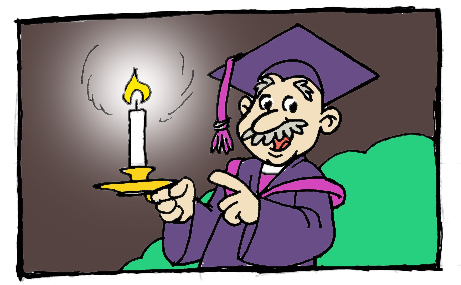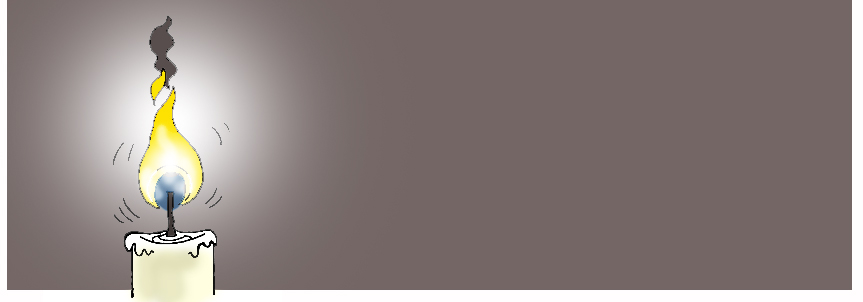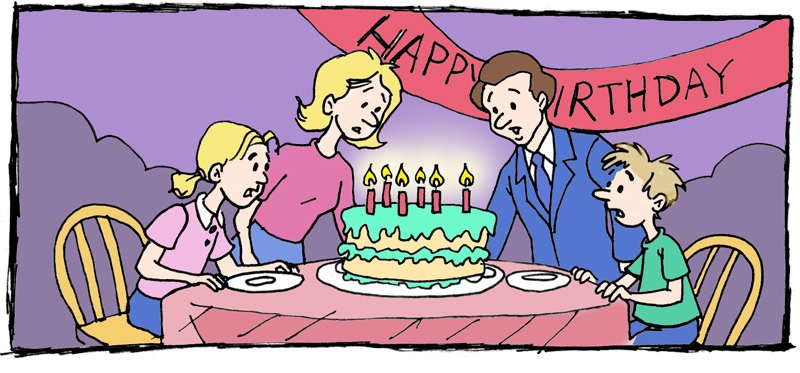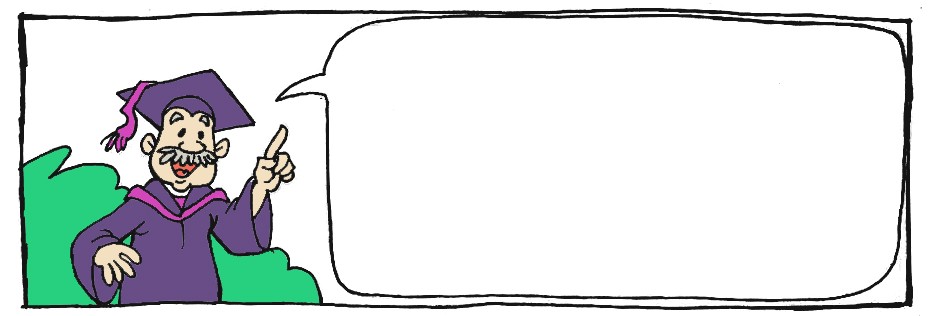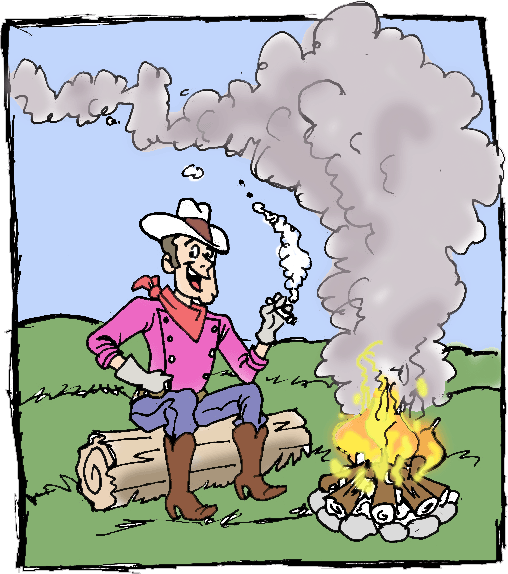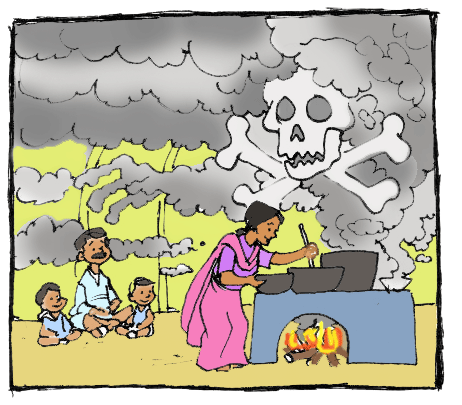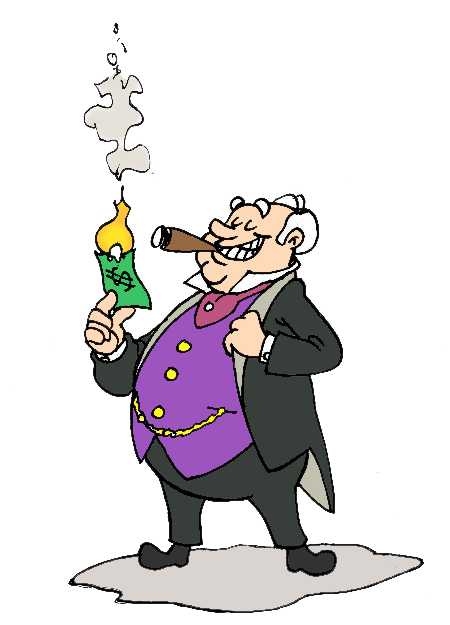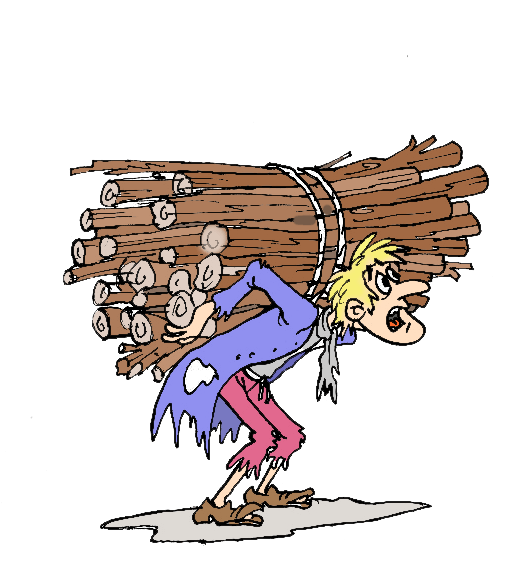It wasn't too long after fire was discovered that people made another discovery, they had a problem with smoke.
This web site discusses, in cartoon form, how we might live in harmony with nature. I will begin by taking a look at how we use energy and some of the popular misconceptions we have about it. I also want to look at alternative sources of energy like biogas, biomass gasification and solar power, how they are being used in developing countries and how they might be used in "more developed countries".
Later on, people figured out how to deal with smoke in the house; they let it out through a chimney. It worked great until they started to notice...
...they still couldn't get rid of the smoke, it kept building up. What were they to do?
Before wood can burn, part of it must be converted into gas by heat. When the gas burns, its heat gasifies more wood and the fire grows. In a conventional fire, a campfire letís say, most of the gas escapes without burning. This is smoke.
This page is updated almost daily. Stay tuned.
Thanks for visiting!
When a candle burns, heat from the flame melts the wax. As the liquid wax gets closer to the flame it turns into a gas. The space you can see between the flame and the wick is filled with this gas. Oxygen is pulled in by rising hot air and mixes with the gas. The mixture of gas & oxygen rises into the flame where it ignites.
So... what is the waste product of combustion?
Carbon Dioxide and Water
What?
Do you mean we've been letting
fuel go up the chimney
all these years?
That's right,
we've been using just a fraction of
the energy potential of our fuel.
Smoke isn't just going up the chimney, polluting the air outside. Without proper ventilation, smoke can stay in the the house and expose the occupants to dangerous chemicals. Millions of people all over the world are being poisoned as they cook over inefficient indoor fires.
The problem is, most people don't understand what smoke is.
They think that smoke is the waste product of combustion!
THIS IS A POPULAR MISCONCEPTION.
Smoke is actually unburned FUEL!!!!
Smoke is made mostly of carbon monoxide (CO) and Hydrogen (H2).
When mixed with oxygen (O2), this gas mixture is highly flammable.
When it burns, the carbon monoxide, oxygen and hydrogen
re-combine into carbon dioxide (CO2) and water vapor (H2O).
What's in the smoke that poisons people?
Unburned smoke contains Carbon Monoxide, Hydrogen, Methane, Nitrous Oxide and a mixture of chemicals commonly called Tar.
Here is a list of wood smoke chemicals published by the U.S. Environmental Protection Agency.
When fuel is completely burned, these dangerous chemicals are broken down into basic elements.
I love that rich smokey flavour!
Here is a quote from the World Health Organization on the effects of smoke.
"Thick acrid smoke rising from stoves and fires inside homes is associated with around 1.6 million deaths per year in developing countries Ė thatís one life lost every 20 seconds to the killer in the kitchen".
www.searo.who.int/LinkFiles/Children_environmental_health_14oct04-who-hq-prs.pdf
Editor's Note
After running this site for some time and doing some research, I have gained some understanding of the effects of inefficient combustion. One of the main things I have learned is that inefficient combustion leads to pollution, damage to health and loss of life. I have also learned that efficiency of combustion can be increased to greatly diminish or eliminate smoke and it's harmful effects. I have also found that polluters say that it is too expensive to change their systems to burn fuel more efficiently. They believe that they must continue to pollute to keep their costs down.
I have concluded that this cost is paid by the the public in health and lives and that it is the public's lack of understanding of the principles of combustion and its effects that makes air pollution socially acceptable and the leads the public to continue to pay the price.
Please Email your comments
The Kyoto Box
I just found out about this solar oven on CNN and quickly found this video on YouTube. The Kyoto Box is one of the best inventions for cooking that I have seen since I started this website. For more information on The Kyoto Box and other great ideas by Kyoto energy, go to www.kyoto-energy.com
TIST - Planting Trees and Improving Agriculture for Better Lives
TIST empowers Small Groups of subsistence farmers in countries such as Tanzania, Kenya, Uganda and India to reverse the devastating effects of deforestation, drought, and famine. Since 1999, TIST participants have been identifying local sustainable development goals that include tree planting and sustainable agriculture. TIST creates a communication and administrative structure that also addresses health (including HIV/AIDS), education, and nutrition. TIST expects to provide long-term revenue for the Small Group participants through the sale of greenhouse gas credits (GhG).



